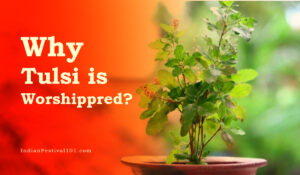India is often referred to as a “melting pot” of cultures. It is a land of immense diversity. With its vast geographical expanse and history that dates back thousands of years, India is a land of traditions, languages, customs, and celebrations. The cultural diversity of India is a beautiful amalgamation of various influences, shaped by the interactions of different civilizations over the years. In this article, we explore the richness of Indian cultural diversity and the factors that contribute to its uniqueness.
Cultural Diversity in India
India is the hub of diverse cultures, religions, and traditions from modern to ancient. There is amazing cultural diversity throughout the country.
Cultures are a part of our life. It’s the identity by which we are defined.
Diversity in India defines different cultures and traditions. Every state has its unique art, culture, and tradition. People speak different languages, dress differently, follow different religions, and eat different food. The one thing that is common for all states is that people of the same temperament. If compared, there is hardly any culture in the world that is as varied and unique as India’s.
India is a country that welcomes all religions. Most tourists who come to India are amazed by personally observing the Indian culture.
1. A Land of Languages
India is home to an astonishing number of languages, making it one of the most linguistically diverse countries in the world. According to the 8th Schedule of the Indian Constitution, there are 22 officially recognized languages, including Hindi, Bengali, Tamil, Telugu, Marathi, Gujarati, Punjabi, and Kannada. Additionally, there are over 1,600 other languages and dialects spoken across the country, highlighting the incredible linguistic variety. Know more: 28 States of India and Their Languages
2. Indian Cultural Heritage
Cultural diversity in India is clearly showcased through its traditional arts, music, dance, and handicrafts. Each region of India boasts its unique art forms, such as Kathak dance from the North, Bharatanatyam from the South, Odissi from the East, and Kathakali from the West. Various folk dance forms, like Bhangra, Garba, and Bihu, offer a glimpse into the colourful diversity of regional culture.
3. Land of Vibrant Festivals
India is a land of festivals, and each region celebrates a multitude of festivals with immense zeal and enthusiasm. From Diwali, the festival of lights, celebrated across the country, to Pongal in the South, Durga Puja in the East, and Navratri in the West, each festival reflects the region’s unique customs, rituals, and culinary delights. Know more: Festival Diversity of India
4. Religious Diversity in India
India is a cradle of major world religions, including Hinduism, Islam, Christianity, Sikhism, Buddhism, and Jainism. The coexistence of various religious communities adds to the country’s cultural diversity. Places of worship, such as temples, mosques, churches, gurdwaras, and monasteries, dot the landscape, reflecting the spiritual tapestry of India.
5. Cultural Diversity and Traditional Dresses
The diversity of India is also reflected in the attire and culinary practices of its people. Each region has its distinct traditional clothing, from sarees, lehengas, and dhotis to turbans, lungis, and phirans. Similarly, the cuisine of India is a gastronomic delight, with each state offering a unique array of flavours, spices, and cooking styles.
6. Folklore and Mythology
Indian cultural diversity finds expression in its rich folklore and mythology, passed down through generations. Folktales, legends, and epics like Ramayana and Mahabharata are woven into the fabric of Indian identity. Different regions have their own oral traditions and mythological stories that are an integral part of their cultural heritage.
7. Spirituality, Yoga and Ayurveda
India’s cultural diversity extends to its traditional medicine systems, such as Ayurveda, Unani, Siddha, and Yoga. These ancient healing practices have been preserved and passed down through generations and are still widely practised across the country, complementing modern healthcare.
8. Architectural Heritage of India
The architectural heritage of India showcases diverse styles and influences, from ancient civilizations like the Indus Valley to the Mughal, Rajput, and Dravidian periods. The country is dotted with awe-inspiring monuments, forts, temples, palaces, and mosques, each reflecting the unique architectural aesthetics of its era.
9. Regional Festivals and Fairs Celebrations
India witnesses various regional festivals and fairs throughout the year. These festivals and fairs celebrate local traditions, folklore, and art forms. The Kumbh Mela, held every 12 years, attracts millions of pilgrims, making it the largest human gathering on earth. These gatherings are the epitome of communal harmony and cultural exchange. Know more: Why Kumbh Mela is Celebrated?
10. Unity in Diversity
Despite the diverse cultures and languages, India stands united by the ethos of “unity in diversity.” The spirit of coexistence and tolerance is ingrained in the beauty of Indian society, fostering a sense of unity among its people.
Conclusion
Cultural diversity in India is a testament to the country’s rich history, multiple influences, and dynamic heritage. Its mosaic of languages, art forms, festivals, and religious practices creates a vibrant diversity that attracts the world. India’s ability to preserve its traditions while embracing modernity is a testament to the country’s enduring cultural legacy. As the nation continues to evolve, it remains firmly rooted in its cultural heritage, where every festival, celebration, and custom acts as a thread, weaving together the colourful and diverse identity of India.
FAQs
How many languages are spoken in India?
India is home to 22 officially recognized languages and over 1,600 other languages and dialects.
What are some famous Indian art forms?
Some famous Indian art forms include Kathak, Bharatanatyam, Odissi, Kathakali, Bhangra, Garba, and Bihu.
How does India exhibit religious pluralism?
India is a land of major world religions, and various religious communities coexist harmoniously.
What are some famous Indian architectural marvels?
Some famous Indian architectural marvels include the Taj Mahal, Qutub Minar, Red Fort, and Khajuraho temples.


